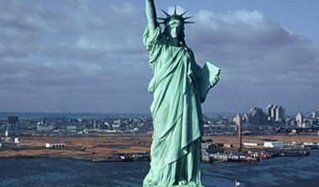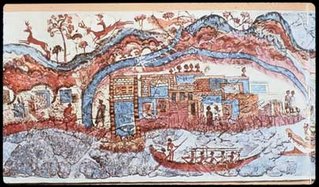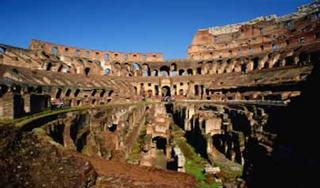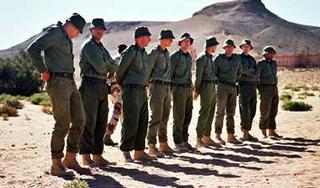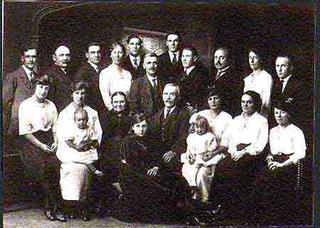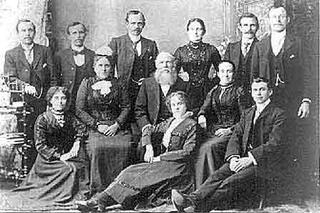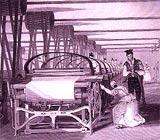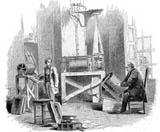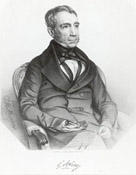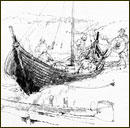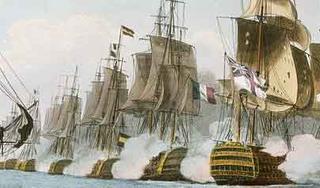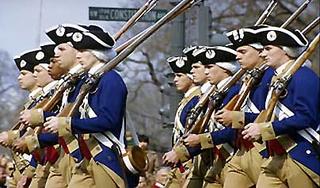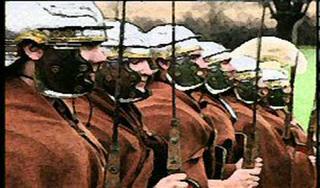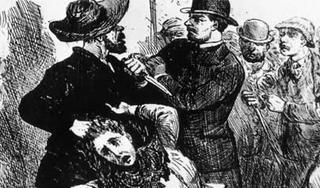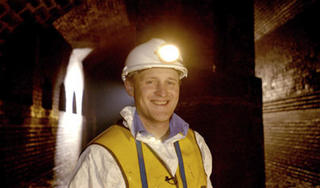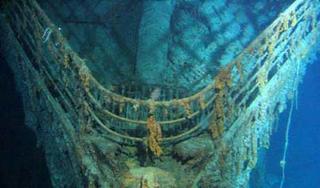'All I do is write,' Isaac Asimov once said, 'I do practically nothing else, except eat, sleep and talk to my wife.' Labelled the human writing machine, and widely considered a genius, Asimov was one of the most prolific writers of recent history. He had published 14 stories and written a further 17 by the time he was 21. He went on to write over 500 books.
Early life
Isaac Asimov was born in Petrovichi, Russia on 2 January 1920. His actual birth date soon became fiction though as Asimov's mother paved the way for her son's successful career. In order to start the bright lad a year early in school she changed the birth date to four months earlier, having observed the poor record-keeping of the Soviet authorities. It worked.
Asimov's family left the Soviet Union when he was three years old, taking him and his baby sister Manya to New York. Here, Isaac proved to be a promising student and before long was writing a column for his high school newspaper. He joined Columbia University at the age of 15 and graduated in chemistry before going on to receive a Master of Arts and a PhD in biochemistry.
Rising star
Writing remained his first love, however, and at the age of 19 he published his first short story, Marooned off Vesta (1939), in the magazine Amazing Stories. Within two years, the young student had written 31 stories. Science fiction had a new rising star, with an insatiable appetite for writing. During the 1940s, he began the books that would be the basis for his reputation as a valid sci-fi author – the Positronic Robot series and the Foundation series.
In 1942, Asimov met Gertrude Blugerman on a Valentine's Day blind date and the couple were married later that year. They had two children together, David and Robyn Joan, but the marriage wasn't to last. A chance meeting at a science fiction convention in 1956 was to prove fatal for the relationship. Asimov signed a book for a fan, Janet Opal Jeppson, and the attraction turned out to be instant. They didn't actually meet again until three years later at a mystery writer's banquet. And they didn't get married until 1973, two weeks after he'd gotten divorced from Gertrude.
Asimov worked as a lecturer of biochemistry at the Boston University School of Medicine from 1949, the same year he started writing a column for Magazine of Fantasy and Science Fiction. He soon discovered he needed more time for his writing and eventually, after 9 years, he gave up teaching altogether. Free just to write, Asimov began working eight hours a day, seven days a week.
Writing in earnest
His work was wide-ranging and well respected. In 1957, he won a Thomas Edison Foundation Award for his book Building Blocks of the Universe. He went on to win many awards for his writing, including a Hugo award in 1963 for 'adding science to science fiction' for his work in the Magazine of Fantasy and Science Fiction. His Foundation series was awarded the Best All-time Novel Series Hugo Award in 1966.
That same year saw the release of the Hollywood film Fantastic Voyage, for which he wrote the screenplay (as well as the original novel). It is often assumed that he wrote the screenplay after the novel as it was the screenplay that was published first. But this was not the case. Asimov explains that he 'wrote quickly and Hollywood works slowly.'
He was back winning awards in 1973: his novelette The Bicentennial Man won a Hugo Award and a Nebula Award. It has since been made into a Hollywood film. In 1976 a magazine dedicated to the writer appeared: Isaac Asimov's Science Fiction Magazine. He also wrote two more autobiographies, In Memory Yet Green (1979) and In Joy Still Felt (1980).
Asimov was also involved in other science fiction film classics, such as 1979's Star Trek: The Motion Picture where he acted as science advisor on the request of creator and producer of the original Star Trek series Gene Roddenberry.
Terrorism
It has recently been claimed that Asimov's Foundation series was read by the world's most wanted man, Osama bin Laden. And in August 2002, Giles Foden reported in The Guardian that 'Japan's Aum Shinrikyo [the cult group] – which released 11 packets of deadly sarin gas into the Tokyo subway system in 1995, was apparently trying to build a community of scientists modelled on Asimov's Foundation.'
That Asimov's work may have influenced such people shouldn't reflect badly on the writer. He didn't intend to appeal to terrorist groups, indeed, he believed violence was 'the last refuge of the incompetent.' Science fiction, whoever writes it, is a fertile genre in which to find individuals or plots with evil intent – the genre is built on evil geniuses, empires and mad men seeking world domination. Luckily, these supposed links don't seem to be harming Asimov's reputation or detracting from his popularity.
Life after death
In 1992, Asimov died from AIDS-related heart and kidney failure aged 72, a consequence of an infected blood transfusion during a triple bypass operation in 1983. And although he has been dead for over 10 years, books, stories and essays from the author are still being published. Many of these are marketed as his 'last work' – a claim that has often been true in one way. Gold was his last anthology of science fiction stories, published in 1991. Forward the Foundation was the last Foundation novel, published posthumously in 1993. I Asimov: A Memoir was his last autobiographical volume, published posthumously in 1993, for which he won the best non-fiction Hugo Award. And these may not actually be the last – there are still unpublished essays and stories lurking in his estate. The human writing machine continues to deliver after his death. He was even posthumously entered into the Science Fiction and Fantasy Hall of Fame in Kansas City in 1997.
Isaac Asimov remains well known for his science fiction writing, in particular his Positronic Robot and Foundation series, but his influence wasn't limited to sci-fi alone. In fact, Asimov wrote for almost every style and genre, from children's books and histories to geography and factual science pieces. Today his work continues to be read and respected across the globe.



